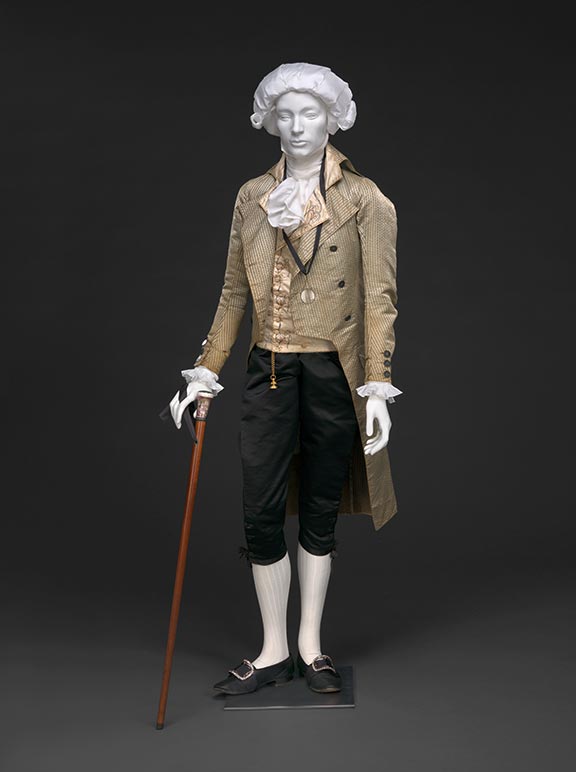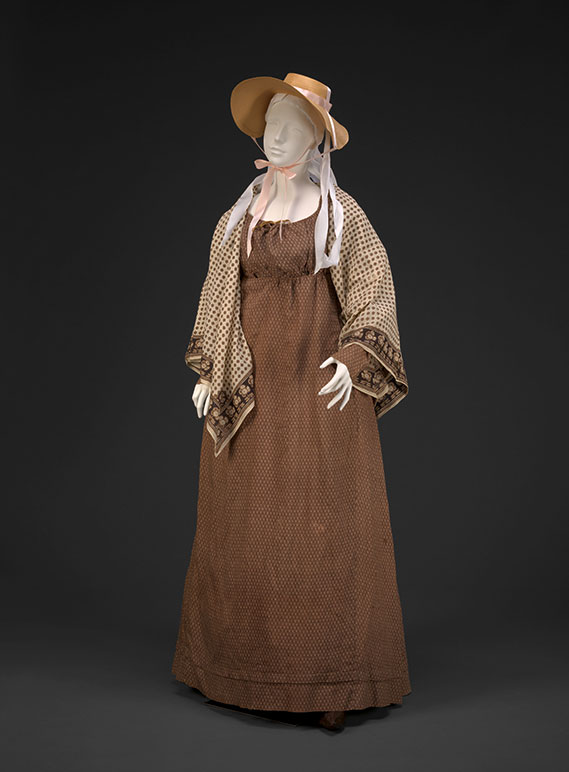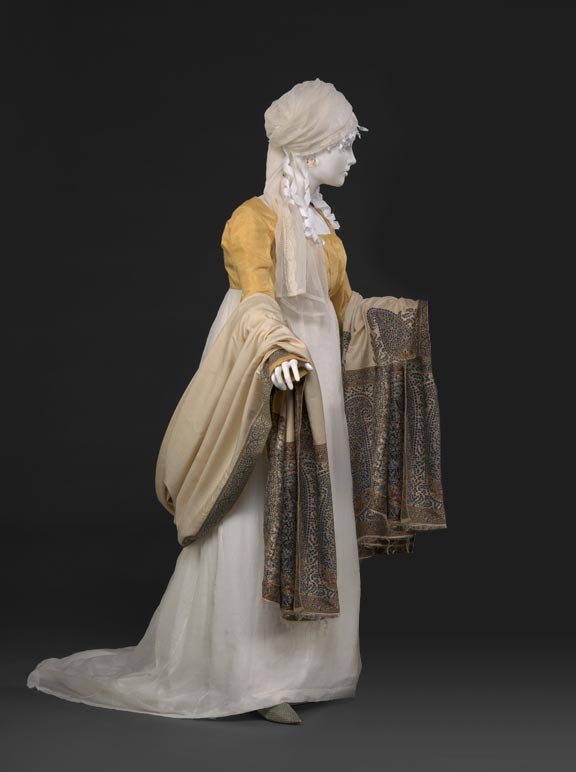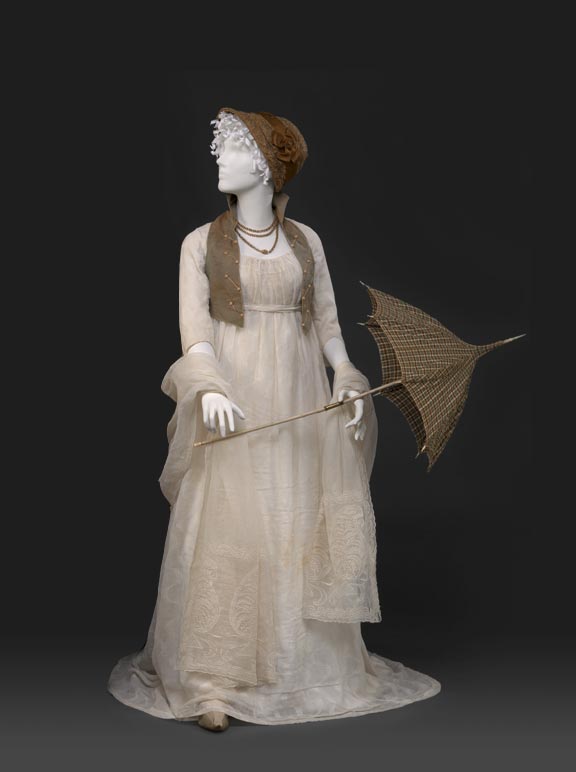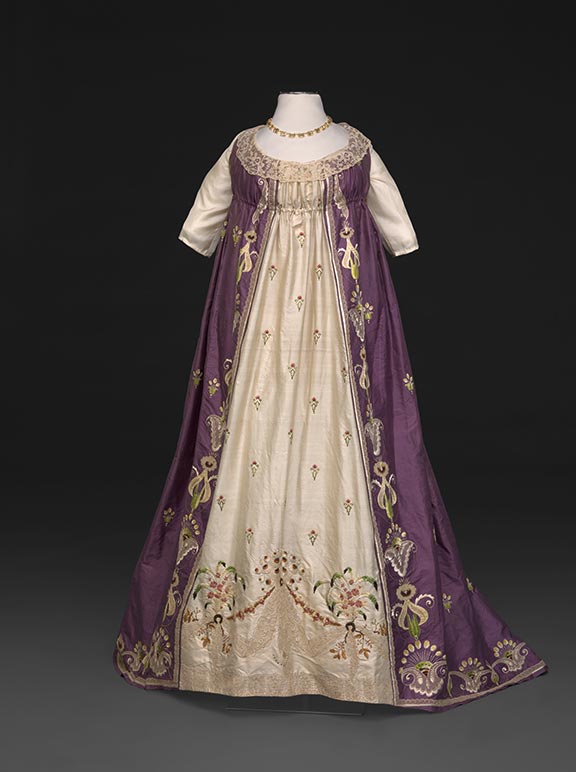“Those in high life ape the fashions and manners of the English, French, and other nations, the middle-class those of the higher or more affluent…and the poor copy the example of the class above them.”
– Philadelphia Aurora, February 15, 1796
At century’s end, economists and politicians were still trying to encourage the manufacture and purchase of “homespun,” by which they meant fabric made in America, not necessarily woven in the home. Many textile production factories were springing up throughout the country, but neither quality nor quantity could yet compete with imports, which supplied everything from the coarsest “osnaburg” assigned to the enslaved, to the finest silks from Europe and China, and embroidered cottons from India.
No amount of encouragement could bring homespun fabrics into widespread use, nor would we invent our own fashions independent of Europe. Instead, American style became increasingly more democratic than fashion in Europe. European visitors noticed that people of almost every social level could, and did, follow fashion to some degree. With a less rigid social structure, people could not only move upwards more readily, but also wear clothing that imitated the social level to which they aspired.
Styles of the 1790s
A dramatic change occurred mid-decade: waistlines rose significantly on both women’s dresses and men’s coats and waistcoats. Skirts and coats were increasingly slimmed. Instead of being snug-fitted to a conical corset, women’s bodices were newly draped and gathered at both neck and waist. These changes were heralded by modest changes earlier in the decade, but by 1800 fashion showed a drastically different look from ten years earlier.



